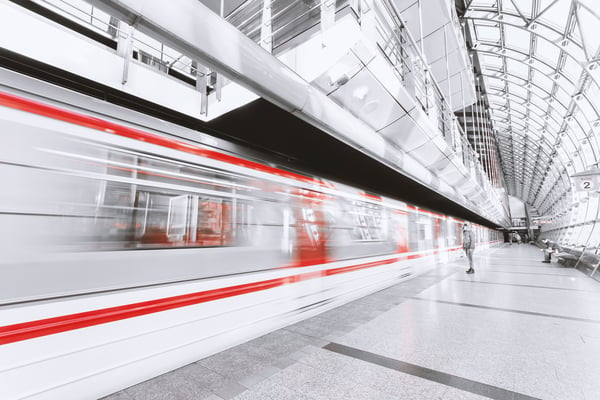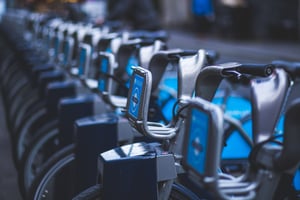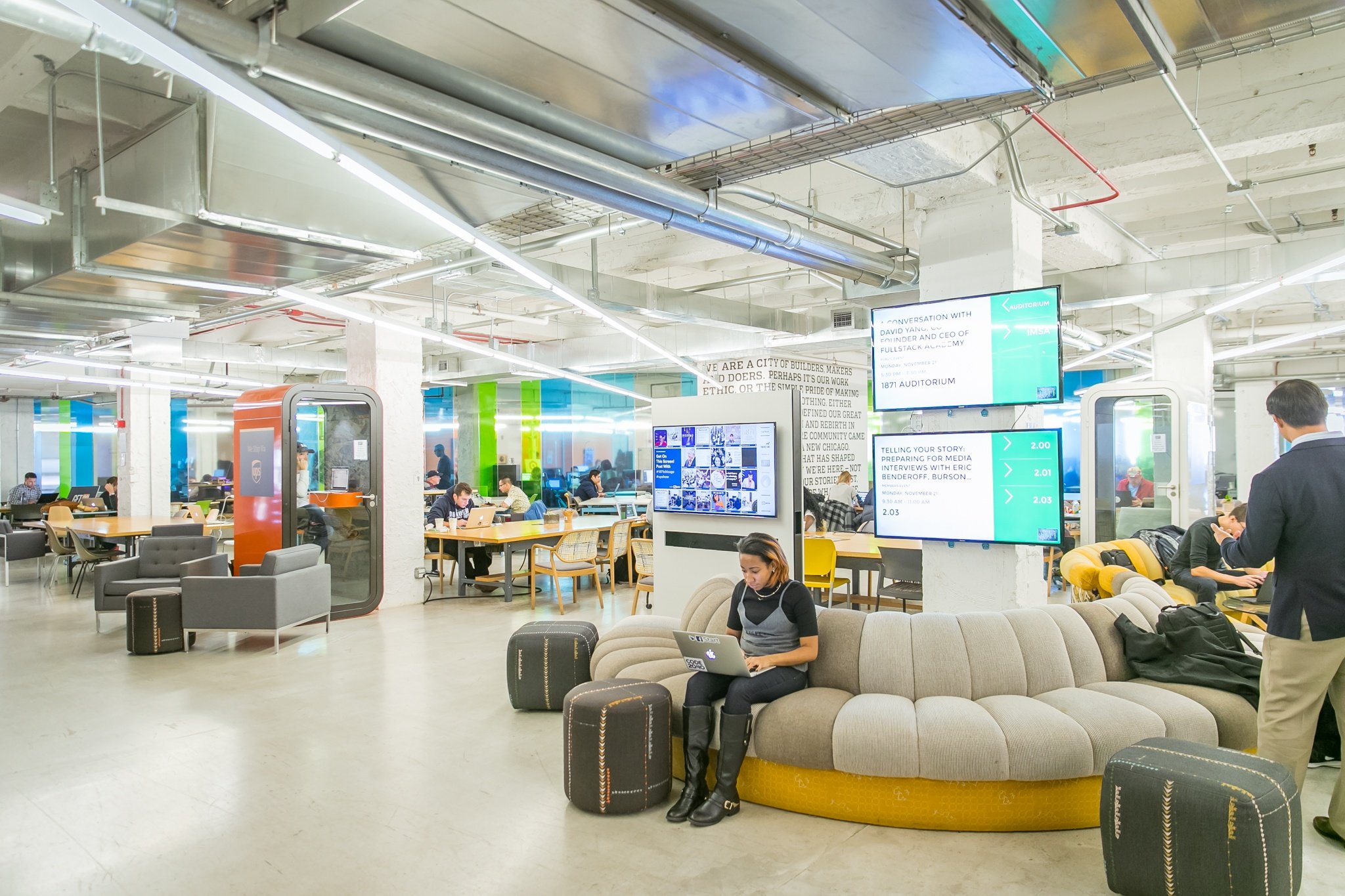Today, technology is changing the way we do just about everything; the way we we work, the way we connect with each other, and of course, the way we get around. In this post, we'll look at how modern advancements are shaping the future of transportation and creating new opportunities for industries and innovators across the globe.

When I was a child I was not distracted by a screen. When I wasn’t outside playing, I was inside reading.  I read everything I could from comic books to mysteries, and I would daydream about what the world could look like. One of my favorite visions was inspired by an ad that was on the back page of LIFE magazine -- an ad for a $3.95 hovercraft kit, promising an ability to “float on air.” I had this plan that I could build it and “fly” roughly a foot off the ground to school and since the weight limit was 200 lbs, I could cart my siblings or friends with me.
I read everything I could from comic books to mysteries, and I would daydream about what the world could look like. One of my favorite visions was inspired by an ad that was on the back page of LIFE magazine -- an ad for a $3.95 hovercraft kit, promising an ability to “float on air.” I had this plan that I could build it and “fly” roughly a foot off the ground to school and since the weight limit was 200 lbs, I could cart my siblings or friends with me.
That dream never became a reality, but fast-forward a few decades and suddenly, the implausible ideas on transport that inspired the stories of the past are anything but fiction. Last mile offerings, self-driving cars, high speed tunnels hyperloop, and flying taxis -- are all suddenly a part of our real lives. If the transit industry continues to advance at its current pace, our imaginations will have to catch up to reality rather than the other way around.
Why Now?
We have to use the state of cities today as the starting point. The UN predicts that two-thirds of the world’s population will live in cities over the next 25 years. Given the problems we already have with transportation, one can only imagine what things will be like in the near future.
Four major problems rise to the top, all of which can be solved with a re-imagination of what was previously deemed impossible.
- Speed: America's drivers waste 42 hours a year per rush-hour commuter on average. Congestion is crippling our productivity.
- Access: Reasonable access to high quality, fairly priced transportation options is not felt by all, resulting in multi-hour commutes and negative impact on every part of a person’s livelihood
- Economics of Owning a Car: Individual cars are utilized roughly four percent of the time. The expense to maintain, insure, and drive a car -- not to mention the physical infrastructure of parking garages and driveways -- makes for an untenable economic condition. We are nearing the time where it will be economically irrational to own and drive your own car.
- Last Mile: The last mile issue has plagued many cities; it’s simple to get into most cities but navigating the last mile to your destination can be fairly tricky. If you live in an urban area, you’ve probably asked yourself more than once how you can get from closest public transportation station to your final stop.
The advent of the smartphone over the last decade has ushered in the opportunity and capability to connect the dots across technology and physical transportation. With a press of a button a car can pick you up, and in the near future, that car may not even have a driver, and within 10 years that car will probably have wings.
An ecosystem of options is being created from bikes, scooters, rideshare vehicles, autonomous ground car transport, Hyperloop travel systems, and new air transport vehicles to solve for these problems.
Last mile offerings: Bike and Scooter Sharing
 We may have imagined that the vehicle of the future would be more sophisticated than two wheels and handlebar; yet, one of the most important transit innovations actually revolves around an invention that’s over a hundred years old. Utilizing modern technologies like GPS, mobile-payment systems, and Bluetooth, bicycle/scooter sharing is a global phenomenon and one of the fastest growing trends -- and helps solve the ‘last-mile’ problem.
We may have imagined that the vehicle of the future would be more sophisticated than two wheels and handlebar; yet, one of the most important transit innovations actually revolves around an invention that’s over a hundred years old. Utilizing modern technologies like GPS, mobile-payment systems, and Bluetooth, bicycle/scooter sharing is a global phenomenon and one of the fastest growing trends -- and helps solve the ‘last-mile’ problem.
Ridesharing: Manned and Unmanned
It took UBER 5.5 years to deliver a billion rides, and its Chinese competitor Didi only 10 months.![]() Ridesharing flips the economics of owning a car on its head with the capital and operating expense spread over a large number of daily customers. Over the next few years, autonomous ridesharing will be more available driving down the price exponentially. Waymo cars drive 25,000 autonomous miles per day on complex city streets and they are launching live passenger trials in Phoenix soon.
Ridesharing flips the economics of owning a car on its head with the capital and operating expense spread over a large number of daily customers. Over the next few years, autonomous ridesharing will be more available driving down the price exponentially. Waymo cars drive 25,000 autonomous miles per day on complex city streets and they are launching live passenger trials in Phoenix soon.
Hyperloop
We’re not far away from a world where you could live 200 miles from your job and be there in under 30
minutes. The impact that will have on where people choose to live regardless of where their job is, will be immense. Hyperloop technology is a revolutionary step in ground transportation and we see today several companies emerging leveraging this technology - Arrivo with a live pilot starting in Denver, Boring Company with plans to build a tunnel in Chicago, Virgin Hyperloop One has a full-scale track in Las Vegas and plans to be operational in 5 years.
Air Transport
There is a growing sentiment that whatever we do on the ground is not going to be enough, passenger
demand is not static. Congestion won’t be solved without something dramatic shifting in how we think about solving the problem. With residential real estate and limited land footprint, we’ve grown up into the air. The same will be true for transport -- we need to move to the sky.
Opportunities and Collaboration
With so many different incoming technologies, the already growing transit sector is set to see massive expansion and is guaranteed to impact not only immediate industries like travel, delivery, and defense, but also every other orbiting vertical. Take litigation as an example: with the emergence of driverless cars, the legalities and liabilities of traffic will likely change, especially considering 94 percent of current accidents are caused by human error. The healthcare industry is estimated to lose $500 billion a year from the safety functions built into autonomous vehicles. Even the public sector will have to make significant adjustments as most police departments in major cities dedicate 80 percent of their resources to traffic control.
Because these advancements have cross-industry impact, it is critical that organizations of all backgrounds and specialties get involved in shaping this new world. If we want to make the most of these revolutionary innovations, then we need to start having cross-industry discussions about the future of transit. No matter where you sit in the value chain, you need to be collaborating and collectively we need a framework to respond. while there are many unknowns regarding the future of transportation, one thing is certain -- it’s going to affect us all.
1871 provides work space, education, resources, and curated connections to help Chicago's entrepreneurs build and scale their business.



